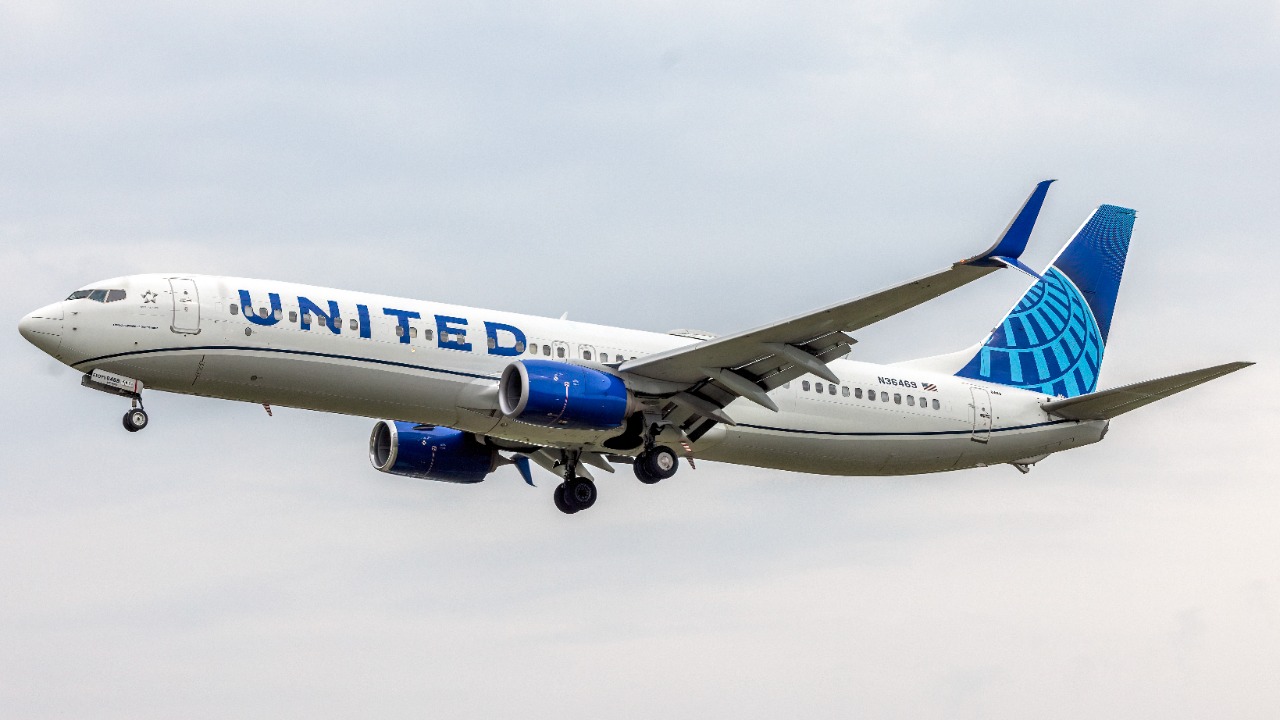
During a routine United Airlines flight, a Boeing 737 experienced a sudden and alarming incident at 36,000 feet when the cockpit windshield cracked unexpectedly. The pilot, who sustained bruises from the impact, suspects that space debris was the culprit. This incident has reignited concerns about the dangers posed by orbital debris to commercial aviation, as new photos reveal significant damage to the cockpit.
The Mid-Air Incident
The United Airlines Boeing 737 was cruising at a steady altitude of 36,000 feet when the unexpected occurred. The windshield of the cockpit cracked suddenly, disrupting the otherwise routine flight. The event unfolded rapidly, catching the crew off guard and creating a moment of chaos in the cockpit. Despite the severity of the situation, the windshield did not fully penetrate, which prevented a potentially catastrophic decompression. The crew’s swift response was crucial in maintaining control of the aircraft and ensuring the safety of all passengers on board. This incident underscores the unpredictable nature of space debris impacts during flight operations, as reported by One Mile at a Time.
As the mystery object struck, the cockpit was thrown into disarray. The impact was forceful enough to visibly shatter the windshield, yet the structural integrity of the aircraft remained intact. The crew’s immediate actions were pivotal in stabilizing the situation, demonstrating their training and composure under pressure. The incident highlights the potential risks that space debris poses to aviation, a concern that has been growing alongside the increasing amount of orbital junk, as noted by The Times of India.
Pilot’s Account and Injuries
The captain of the flight, who was directly affected by the incident, has voiced his belief that space debris was responsible for the windshield’s damage. His firsthand account provides a compelling narrative of the event, as he described the sudden impact and the subsequent chaos in the cockpit. The pilot’s suspicion is based on the nature of the impact, which aligns with known characteristics of space debris collisions. This perspective is supported by View from the Wing, which also shared new photos showing the extent of the cockpit damage.
In addition to the psychological stress of the incident, the pilot suffered physical injuries, including bruising from the force of the impact. Despite these challenges, he played a crucial role in safely landing the aircraft, demonstrating his experience and skill in crisis management. The pilot’s ability to navigate the emergency situation ensured the safety of all passengers and crew, as reported by The New York Post.
Visible Damage and Evidence
Photographic evidence from the incident reveals the extent of the damage to the cockpit. The images show significant cracks in the windshield, indicative of a high-velocity impact consistent with space debris. The structural integrity of the Boeing 737’s windshield played a crucial role in preventing a more severe outcome, as it withstood the impact without complete failure. This resilience highlights the engineering behind the aircraft’s design, which is built to withstand such unexpected challenges, as detailed by View from the Wing.
Initial inspections of the aircraft confirmed that the damage was localized to the windshield area, with no further structural issues detected. This finding is crucial for understanding the impact’s scope and ensuring the aircraft’s continued safety. The incident serves as a reminder of the potential vulnerabilities in aviation, particularly concerning space debris, as highlighted by One Mile at a Time.
Suspected Role of Space Debris
The captain’s theory that space debris caused the windshield smash is grounded in the known hazards of orbital debris at cruising altitudes. The high-velocity nature of the impact aligns with the characteristics of space debris, making it a plausible explanation for the incident. This perspective is supported by Jalopnik, which discusses the growing threat of space debris to aviation safety.
While alternative explanations, such as a mystery object, have been considered, the evidence points more convincingly towards space debris. The incident at 36,000 feet exemplifies the risks associated with the increasing amount of orbital junk, which poses a significant threat to aircraft operating at high altitudes. This case serves as a real-world example of the potential dangers, as noted by The Times of India.
The incident involving United Airlines highlights the urgent need for addressing space debris risks. As the volume of orbital debris continues to grow, the aviation industry must consider strategies to mitigate these hazards and ensure the safety of air travel. This case underscores the importance of ongoing monitoring and research into the impacts of space debris on commercial aviation, as emphasized by The New York Post.